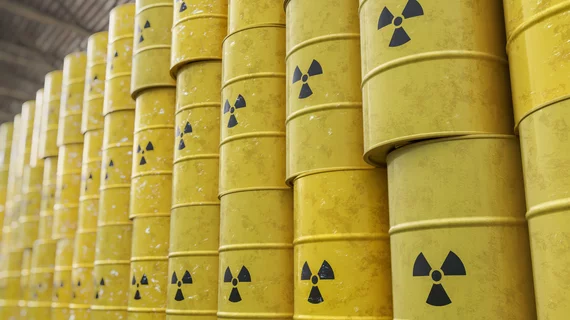Most countries face nuclear imaging supply issues, and COVID-19 has only exacerbated the problem
Molecular imaging continues to advance and is becoming increasingly important to patient care. But a new survey suggests many countries are facing radiopharmaceutical supply issues, with lower-income regions suffering the worst.
A large group of international physicians made this discovery after querying 35 countries representing nearly 75% of global nuclear medicine sites, sharing their findings July 9 in the Journal of Nuclear Medicine. Societies responding to the survey reported problems with radioisotope availability, radiopharmaceuticals and kits for diagnostic and therapeutic use.
For example, the United States accounts for approximately half of the global market, but relies on three Molybdenum-99/ Technetium-99m suppliers. Meanwhile, most African countries depend on a single supplier for such radioisotopes which are often used in cancer imaging exams.
And the ongoing pandemic has only exacerbated the problem, as flight restrictions have hindered supply chains, according to Andrew M. Scott, with the Department of Molecular Imaging and Therapy at Austin Health, and colleagues.
“In the face of disruptions to global supply chains by the COVID-19 outbreak, renewed focus on ensuring reliable supply of radiopharmaceuticals is a major priority for nuclear medicine practice globally,” the authors added.
Scott and colleagues received responses from key society contacts in the International Atomic Energy Agency database. For North America, Latin America and Australia the data represented 91.3% to 100.0% of nuclear medicine camera sites. Half of locations in Africa were represented, but European responses were low, which likely affected the survey results.
In addition to Mo-99/Tc-99 supply issues, respondents noted problems reliably obtaining cold kits, which are used to simplify radiopharmaceutical production and enable consistency across varying sites. More than half of the 33 radiopharmaceutical kit manufacturers provide to only a single country and eight provide kits to two countries.
Additionally, all countries said they lack trained and qualified staff, including clinicians, radiochemists and physicists, to perform tasks such as quality assurance and proper labeling. This also hampered their ability to offer complex procedures, Scott et al. noted.
Issues also extended into specific radiopharmaceuticals, with only 28 countries indicating they offered PET services. Low and low-middle income countries had the fewest number of sites. The most widely used agent is 18F-FDG, but non-FDG tracers were limited in most countries due to high cost, no access to a cyclotron, and regulatory restrictions, among other reasons.
Most respondents also do not have access to therapeutic tracers, such as 123I, 123I-MIBG and 131I-MIBG, because of costs and supply or distributor issues.
“The data obtained in this survey project clearly shows that all countries have issues of radiopharmaceutical access and availability, although the capability to address these issues varies according to the size of the country, funding and nuclear medicine infrastructure,” the group noted.
Global nuclear medicine organizations can coordinate efforts with local groups to enhance workforce training, Scott et al. noted. The latter can also identify geographic-specific access and regulatory problems, which can be beneficial for lower-income countries.
Doing so will allow patients to receive the highest quality care possible, the authors concluded.
“Nuclear medicine is widely used and is expanding worldwide and addressing the issues of access and availability of radiopharmaceuticals is a key strategy for ensuring patients can benefit from these vital imaging and therapeutic procedures,” they added.
The survey was undertaken as part of the Nuclear Medicine Global Initiative and supported, in part, by the Society of Nuclear Medicine and Molecular Imaging.

